LEARN ABOUT
supraventricular tachycardia (SVT)
Part of living your life with SVT is learning all you can about it. Whether you’ve been diagnosed or suspect you have it, you’ve come to the right place to learn about the condition.
What is SVT?
SVT is a heart condition that leads to episodes of a fast, regular heartbeat that starts and stops without warning.
SVT is something you are born with. It is not a genetic condition. That means it’s not passed down from your parents and you won’t pass it down to your children.
During an SVT episode, one’s heart rate can jump from a normal range of 60 to 100 beats per minute (bpm) to up to 250 bpm or more.
Supra = above
Ventricular = the ventricles
Tachycardia = heartbeat over 100 bpm
Normal
resting heart rate
Heart rate during
SVT episode

WHY IS SVT
sometimes called PSVT?
Your healthcare provider may refer to SVT as PSVT, or paroxysmal supraventricular tachycardia. The two terms mean the same thing. ”Paroxysmal” simply means that an episode begins suddenly and can happen repeatedly.
Everyone’s experience with SVT is different
SVT symptoms can last from just a few minutes to up to several hours. Some people feel more intense symptoms than others. SVT episodes can make you feel weak even after they end, and some people experience exhaustion that can last for days.
During an SVT episode, many people experience the following symptoms:



There is no way to know how long an SVT episode will last once it starts. Some episodes may be short with more severe symptoms, while others may be long with mild symptoms. The random nature of SVT episodes may leave you feeling anxious about when the next one might happen. This anxiety can lead some people to avoid certain daily activities or stop doing regular activities.
The number of episodes people experience per year is different for everyone. Some people experience episodes weekly, while others may only experience 1 or 2 episodes every few years.
It is also common for the frequency of episodes to change year to year, especially as treatment is added or adjusted.
Two out of three people
with SVT experience up to
12
episodes
per year

Have a
heart-to-heart with your healthcare provider
The SVT Impact Profile can help get your conversation started.
SVT stats

Stay up to date about SVT with education, resources, and support.
By submitting your email, you confirm you are over 18 years of age and consent to receive future emails from SVTHeartToHeart.com and Milestone Pharmaceuticals. View the Terms of Use and Privacy Policy.
References
1. Colucci, R.A. Am Fam Physician. 2010;82(8):942-952. 2. Milestone Pharmaceuticals data on file: PSVT Patient Journey Market Research conducted by Triangle Insights Group, 2018. 3. Milestone Pharmaceuticals data on file: PSVT Patient Journey Market Research conducted by Triangle Insights Group, 2020. 4. Yetkin, E. Cardiovasc Endocrinol Metab. 2018;7(2):34-36. 5. Al-Zaiti, S.S. Crit Care Nurs Clin North Am. 2016;28(3):309-316. 6. Milestone Pharmaceuticals data on file: PSVT Patient Observational Study conducted by The Blueprint Research Group, 2020. 7. Mayo Clinic. Supraventricular tachycardia. 2022. 8. Page, R.L. Circulation. 2016;133(14):e471-e505. 9. Helton, M.R Am Fam Physician. 2015;92(9):793-800. 10. Sequeria, N. Heart Rhythm. 2020;17(5 Pt B):854-859. 11. Bansal, A. J Arrhythm. 2018;34(2):129-138. 12. Cleveland Clinic. Cardiologist. 2021. 13. Cleveland Clinic. Electrophysiologist. 2022. 14. Wood, K.A. Eur J Cardiovasc Nurs. 2007;6(4):293-302. 15. Hafeez, Y. Paroxysmal supraventricular tachycardia. StatPearls. 2023.

















